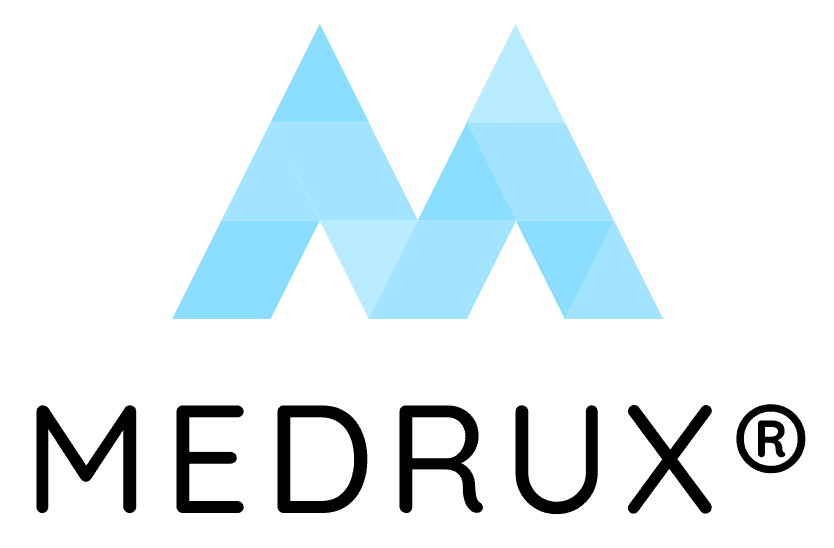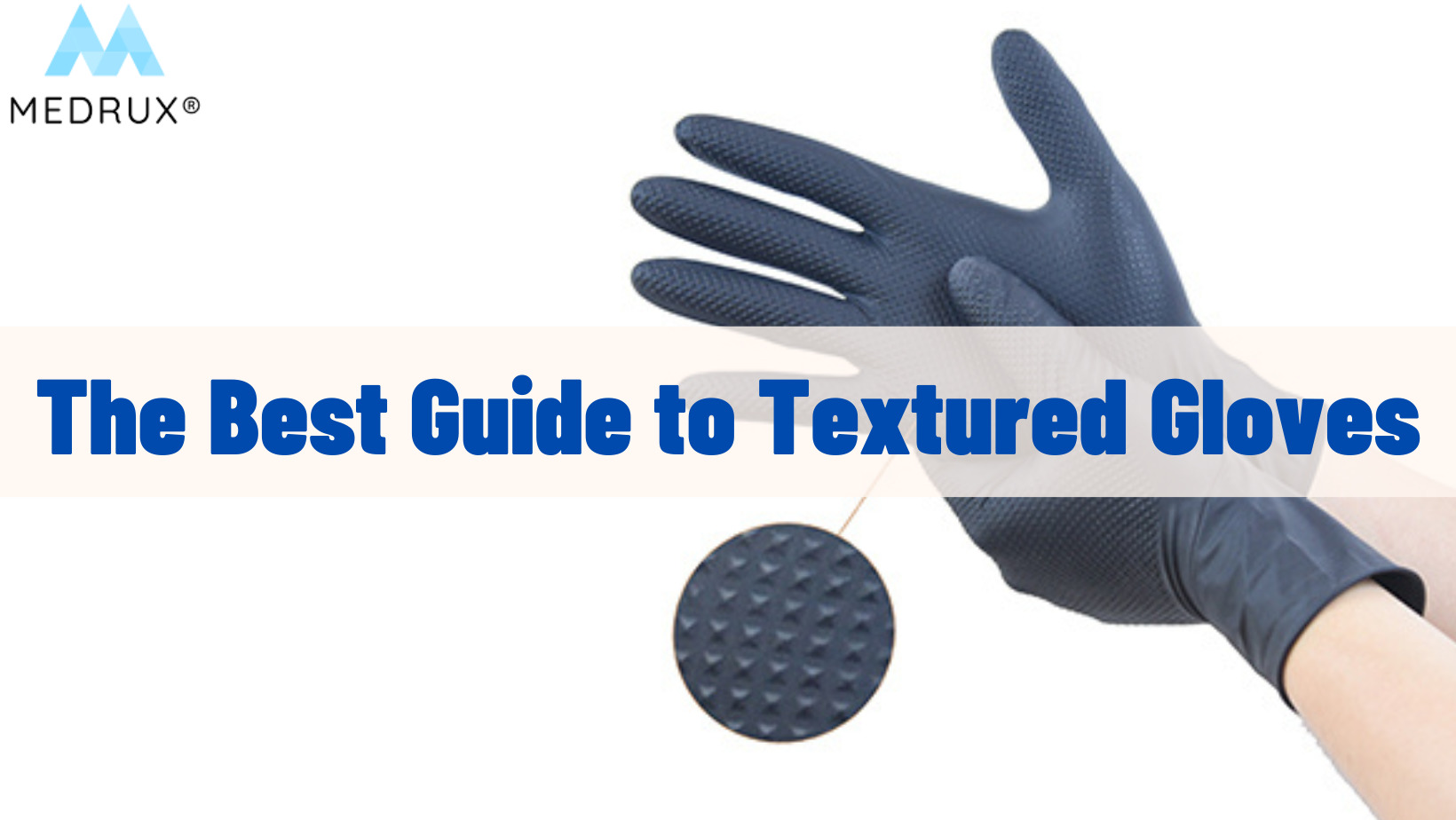Nearly 19.3 million new cases of cancer were diagnosed worldwide in 2019.
According to the International Agency for Research on Cancer or IARC of the World Health Organization:
There were 14.1 million new cancer cases and 32.6 million people living with cancer (within five years of diagnosis) in 2012 worldwide. v
Unfortunately, it is the world’s second leading cause of death.
Every day, significant developments are made in cancer research and medical technology.
Treatment may include surgery, radiation therapy, and Chemotherapy.
However, Chemotherapy remains the most common treatment option for many patients.
The handling and transporting of chemotherapy medications are known to may have adverse effects or potential risks.
This is based on the strength, frequency, and duration of exposure to the drug.
For this reason, it is essential to use personal protective equipment or PPE for all medical personnel.
Medical gloves are indeed a part of the personal protective equipment (PPE) used in such cases.
But not all medical glove types are approved for handling hazardous drugs and chemicals.
The use of chemo-tested gloves is recommended to protect staff.
In today’s article, we will explain more about nitrile-chemo-rated gloves, which are very popular in this field.
Besides, there will be lists of their benefits and most important features.
So, take a deep breath.
Make yourself a cup of tea or coffee.
All you have to do now is relax and try to read slowly.
Hopefully, you will find it enjoyable.
Let’s start now with the first question.
What are the Chemo-Rated Nitrile Gloves?
Chemotherapy gloves are a type of medical-grade, sterile, single-use disposable gloves.
Gloves that fall into this category are sometimes referred to as chemo gloves.
They can be made out of several types of materials, including:
- Nitrile
- Neoprene
- Latex
However, Nitrile is the most commonly used material in producing these chemo gloves.
Because it has superior qualities that make Nitrile chemotherapy gloves a great choice.
-
Chemo-rated nitrile gloves
First of all, what is Nitrile? Nitrile is a rubber derivative.
Its scientific name is nitrile butadiene rubber (known as NBR), which can lead to its classification as a type of latexNitrilever; nitrile is free from latex and latex proteins. Nitrile is an entirely synthetic rubber.
It is produced through the copolymerization of acrylonitrile and butadiene.
Respectively, this two materiNitrilevide nitrile with its chemical and puncture resistance.
Nitrile is an incredibly versatile material for manufacturing gloves that provide exceptional protection from various hazards.
Nitrile gloves are highly flexible, offering magnificent dexterity and touch sensitivity.
Additionally, they have excellent resistance to chemicals and solvents.
Furthermore, they are durable with excellent tear, abrasion, and puncture resistance.
Nitrile gloves are more impressive because they are void of latex protein.
If allergies to latex are a concern, then it is preferred to choose other non-latex gloves.
Therefore, Nitrile gloves are a desirable option for those suffering from latex allergies.
Now, back to the chemotherapy gloves.
The Features of Chemo-Rated Nitrile Gloves
As we previously mentioned, chemo gloves are designed specifically for high-risk procedures, which include administering Chemotherapy and radiological treatments.
Nitrile gloves are suitable for Chemotherapy and cytotoxic applications, combined with chemical resistance and high material purity.
-
A variety of sizes are available to meet the needs of your staff.
For instance, gloves are made to fit a range of people, from extra-small to extra-large hands. These gloves have several unique features, which may include the following:
-
Chemo-Rated Nitrile Gloves are Powder-Free gloves.
It helps reduce the risk of causing an allergic reaction in patients or users who may be sensitive to latex-based products. If you are interested in other Hypoallergenic Gloves, check this link.
-
The thick barrier of the glove has enough puncture resistance
It helps prevent a penetrating surface for the person wearing it.
- Excellent tactile sensitivity for precision tasks
Despite the thickness, they also offer excellent tactile sensitivity for precision tasks. Click here [1], [2] To learn more about glove thickness.
-
The gloves feature an ambidextrous fit.
With beaded cuffs for easy donning that prevents unnecessary rolling up.
The beaded cuff eliminates pesky rolling up from the glove’s cuff, keeping it down in place and comfortable, so there’s no need to adjust it every moment.
Learn more about the benefit of extra-long gloves.
-
Textured fingertips
Sometimes, they have textured fingertips that allow for the best grip possible and reduce spills and accidental drops.
For this reason, this texturing limits accidents that may happen with smooth-surface gloves, especially when gloves may become wet and slippery.
Therefore, Nitrile gloves with textured fingertips provide a better grip in case of using tools and equipment.
-
Disposable gloves
These gloves are disposable after each use, which reduces the transfer of bacteria.
So, once you are done with your gloves, dispose of them in a trash bin, apply instant hand sanitizer, and be on your way.
Please read this article to learn more about the manufacturing process of disposable gloves.
-
Wide colored selection
Chemo nitrile gloves are available in an extensive selection of colors, giving businesses more options.
However, they are famously found in distinctive purple or pink nitrile gloves.
This does not mean that the blue chemo-rated nitrile glove is not good as the purple one.
Color coding is used in hospitals and laboratories, mainly when using the double-gloving technique.
Check out these other eight-colored Nitrile gloves and their applications now.
-
Applications
While medical examination gloves are better suited to low-risk applications.
Chemotherapy and cytotoxic-resistant nitrile gloves combine chemical resistance with high material purity, resulting in remarkable resistance to even the most aggressive chemotherapy drugs.
-
Durability
They also have high durability, making them suitable for laboratory work and PPE use.
Finally, they are approved for the application of chemo treatment and have been tested specifically for this use.
Handling chemotherapy agents or drugs leads to a cytotoxic risk, which can be hazardous if workers wear gloves that are not safe and specifically rated for chemo medical treatment.
The Functional Benefits of Chemo-Rated Nitrile Gloves
Direct skin contact with chemotherapy drugs poses a significant risk to medical professionals and all clinical staff.
This can lead to potential mutagenic, carcinogenic, and teratogenic effects on those exposed.
It is critical to select the appropriate glove for the application, especially in cytotoxic situations where aggressive drugs and chemicals are used.
These gloves’ benefits depend on their physical properties, as mentioned above.
Here is a quick list of chemo-nitrile gloves’ benefits below:
- Excellent for chemotherapy drugs handling
- Available option for use with 32 Chemotherapy Drugs and Fentanyl
- Good barrier protection against bacteria, viruses, chemicals, and dangerous substances
- Free from latex protein, eliminating Type I Immediate Hypersensitivity reaction
- Custom sizes and designs enhance comfort and fit
- Finger or palm textured enhance wet and dry grip in addition to handling precision
- Interiors free of chlorinated or polymer powder promote a smooth donning and doffing experience.
Notably, These gloves have been tested against a wide range of chemotherapy drugs, such as the following:
- Carmustine,
- Cisplatin,
- Cyclophosphamide (Cytoxan),
- Cytarabine,
- Dacarbazine (DTIC),
- Doxorubicin Hydrochloride,
- Etoposide (Toposar),
- Fluorouracil,
- Ifosfamide,
- Methotrexate,
- Mitomycin C,
- Mitoxantrone,
- Paclitaxel (Taxol),
- Thiotepa and Vincristine Sulfate.
Then, how do you choose the proper glove?
We must first explain the standards for chemotherapy protection gear.
Furthermore, the number of tests that are subjected to such items.
An evaluation of Chemo-Rated Nitrile Gloves
Gloves designed in these environments can be evaluated for their ability to protect against chemical substances.
This is done by conducting what is known as a chemical permeation test.
Gloves sold in the United States must pass rigorous testing before they can be accepted for treatment in chemotherapy medications.
Approved gloves must meet the requirements of ASTM D6978-05, which we will explain in detail after this.
So, Chemotherapy gloves are subjected to the following tests:
-
Penetration (breakthrough)
It means the movement of a chemical and micro-organism through the material of a glove.
Then, this is an evaluation of the ability of contaminants to pass through microscopic holes or pores in gloves by using air or water leakage tests.
-
Permeation
This is the process by which a chemical dissolves and passes through the material of the gloves at a molecular level.
Permeation can either occur without damaging the material or by damaging the material by degrading it.
It is tested using seven mandatory chemotherapy drugs and two cytostatic medications.
Permeation is measured in the time it takes a chemical to pass through the barrier at a determined permeation rate, referred to as “chemical breakthrough time.”
The permeation rate is the rate in volume over time at which a chemical passes through the glove material.
-
Degradation
A chemical reaction with the glove material causes changes in the glove’s physical or chemical properties.
In other words, the tendency to break down or become ineffective when exposed to certain chemicals.
This means swelling, shrinkage; color change; becoming harder or softer, stiffer or brittle; texture deterioration; loss of elasticity and tensile strength.
Any gloves that meet the standard requirements for these tests are approved for handling and administering chemotherapy medications.
Chemo-rated nitrile glove standards and regulations
The Centers for Disease Control and Prevention’s National Institute for Occupational Safety and Health (NIOSH) tests gloves for Chemotherapy against nine different chemotherapy medications.
Approved Chemotherapy rated gloves must fulfill the specific requirements for the International ASTM D6978-05.
ASTM = American Society of Testing and Materials
These standards are identified as Standard Practice for assessing the Resistance of Medical Gloves to Permeation by Chemotherapy Drugs.
These gloves must have been tested against various chemotherapy drugs, including Carmustine and ThioTEPA.handled.
All chemotherapy gloves must have a certificate confirming they have been tested as suitable for protecting from chemotherapy drugs.
Any gloves that earn the ASTM D6978 certification standard should be safe when handling chemotherapy agents, but two sets of gloves are still recommended.
ASTM D6978-05 is the most recent standard for testing gloves used in Chemotherapy.
Before this standard, most gloves were tested using the ASTM F739 standards.
Furthermore, ASTM F739 Standard Test Method for Permeation of Liquids and Gases through Protective Clothing Materials under Continuous Contact.
While ASTM F739 is the general test method for chemical permeation testing, ASTM D6978 tends to add some requirements specific to chemotherapy drugs.
Additionally, there is ASTM F1671 Test too.
This test measures the resistance of materials used in protective clothing to penetration by blood-borne pathogens using a surrogate microbe under conditions of continuous liquid contact.
Gloves should undergo rigorous testing to determine their resistance to viral penetration and are rated accordingly.
Compared to the European counterpart EN 374, it is even 100 times more rigorous.
EN 374-3:2003
Protective gloves against chemicals and micro-organisms—Part 3: Determination of chemical permeation resistance.
This European Specification defines the determination of the resistance of protective glove materials to permeation by potentially hazardous non-gaseous chemicals under conditions of constant interaction.
It is highlighted that the test does not represent conditions that are likely to occur in service.
Furthermore, test data should only be used to compare materials in broad categories of breakthrough times on a relative basis.
So, these gloves have tear and chemical resistance in compliance with EN ISO 374 and comply with EN 455 sections 1 to 4 for single-use medical gloves.
The European Standard 455 specifies the requirements and provides the test methods for medical gloves for single use.
Please press the link to learn more about the EN455 requirement and its four tests.
On the other hand, there is ASTM D6319 Specification.
This determines the criteria for medical nitrile examination gloves and whether they provide protection.
In addition, these extra protective chemo-rated gloves must have a Freedom From Holes (AQL) rating score of 2.5 or below with very few defects in a set.
AQL stands for “Acceptance Quality Limit.”
It is a measure applied to products that tell you how many defective components are considered acceptable during random sampling quality inspections.
Also, to label nitrile gloves as a medical grade in the United States, manufacturers must obtain FDA 510(k) certification to ensure their credibility.
FDA, or Food and Drug Administration is a U.S. department responsible for ensuring food and materials used for food handling are safe for the public.
It provides rules and guidelines on how materials are made and properly used.
FDA approval is essential for PPEs as it opens up uses in the food service space and conforms with all requirements established by the FDA for safe food handling.
Bottom line:
When purchasing gloves for Chemotherapy, look for the ASTM D6978 label on the glove packaging to confirm they meet federal standards.
If you want to learn more about protective glove standards.
Also, check out level A, B, C, and D PPE regulations and certifications.
How to wear Chemo Rated Nitrile Gloves?
Medical professionals are taught to wear chemotherapy gloves and other PPE when preparing, mixing, and administering chemotherapeutic agents in a healthcare setting.
Even though chemo-nitrile gloves have been tested to ASTM standards, it is still recommended that two pairs of gloves be worn.
In particular, when compounding, administering, managing a spill, and disposing of hazardous drugs.
Only the outer glove must be sterile for sterile preparations.
Wear the inner glove underneath the gown cuff and the outer glove over it.
Wear gloves with extended cuffs over the gown’s cuff to protect the wrist and forearm.
How should Chemo-Rated Gloves be used for Chemotherapy?
Chemotherapy slows or stops the spread of the tumor by destroying cancer cells at different stages of their lifecycle.
There are more than 100 anti-cancer drugs currently in use for Chemotherapy.
Although Chemotherapy is an effective treatment option for cancer patients, these medications do not distinguish between cancer cells and healthy cells.
For this reason, personnel handling prescribed medication risk being exposed to drugs.
This could harm their healthy cells and cause immediate or delayed long-term toxic effects, such as potential mutagenic or carcinogenic effects.
Chemo gloves are primarily recommended for those in the medical field who administer Chemotherapy.
This may include oncologists, nurses, chemists, pharmacists, transportation staff, and cleaning staff.
Even with tested chemotherapy gloves, it’s recommended that staff minimize the time they are exposed to anti-cancer drugs.
Therefore, if you are handling chemotherapy medications for extended periods, you should change your gloves every 30 minutes to avoid unnecessary risk.
Of course, you are also recommended to replace your gloves whenever they appear soiled or damaged.
Are there any other factors related to chemo hazards?
According to the American Cancer Society, or ACS, chemotherapy medications are excreted through bodily fluids such as:
- sweat
- urine
- saliva
- stool
- tears
Routes of exposure to health care professionals include contact with contaminated vials and ampoules, exposure due to leakage in venous ports and intravenous administration systems, and aerosols released during preparation and administration.
This means that our loved ones at home could also be at risk.
It generally takes 48 to 72 hours for your body to break down and eliminate most chemo drugs.
But it’s important to know that each chemo drug is excreted or passed differently through the body.
A research study published in 2019 titled “Drugs That Are Hazardous to Health Care Personnel” is concerned with drugs that present a risk to health care personnel if they are not equipped with proper personal protective equipment that supports their safety.
It says that chemotherapy exposure can result in issues such as:
- the development of cancers (carcinogenicity)
- developmental problems in a baby if you are pregnant (teratogenicity)
- reproductive toxicity
- organ toxicity
- genetic alterations (genotoxicity)
For this reason, please be careful when choosing a chemo-nitrile glove to buy.
It would be best to ensure that this glove is adequate and certified to provide the necessary protection.
What do You need to Know About Fentanyl Citrate?
Fentanyl was invented in 1959 and introduced in the 1960s as an intravenous anesthetic.
It is a fast-acting artificial opioid used by cancer patients as a painkiller.
It comes in tablet or patch form.
The drug, Fentanyl Citrate, is 50 times stronger than heroin and an estimated 100 times more powerful than morphine.
Therefore, due to its powerful pain-killing properties, it’s used for heroin and oxycodone.
Furthermore, they only treat severe pain, such as end-stage cancer and post-surgery pain due to their potency and high addiction potential.
Just 2 mg of this drug is strong enough to cause death.
This is why it is important to use disposable gloves that protect you from this powerful drug when working with cancer patients.
Chemo Rated Nitrile Gloves can also be used as fentanyl gloves, but only if these gloves are tested for protection against fentanyl.
There are two types of fentanyl:
- pharmaceutical fentanyl, which is only available in hospitals,
- illicit fentanyl is distributed through drug dealers and the illegal drug market.
The effects of fentanyl include extreme short-term happiness, drowsiness, nausea, and sedation.
In the case of abuse, however, it can result in confusion, central nervous system depression, unconsciousness, difficulty breathing, seizures, and, eventually, death.
How Long Do Chemotherapy Gloves Last?
Medical facilities that plan to buy disposable chemotherapy gloves in bulk should always consider the gloves’ shelf life.
This is importgloves’ medical facilities, emergency medical units, and oncology departments to avoid running out of gloves when needed.
However, a certain percentage of the gloves may remain unused for an extended period.
Therefore, to avoid degradation, you should choose more durable gloves.
The base materials of gloves can affect their longevity.
Natural rubbers like latex have relatively short shelf lives of three years.
Meanwhile, you can store synthetic materials like vinyl or nitrile for over five years.
While they have expiration dates, this does not necessarily mean they should be thrown away immediately.
But, if kept properly, their quality should be preserved longer than the recommended shelf life.
However, if the gloves are not correctly stored, have been removed from their packaging, or have been exposed to critical factors, their shelf lives and quality may be compromised sooner than expected.
Significantly, you shouldNitriled gloves when there is apparent damage, like holes or tears.
You should also not use them if they are discolored.
Discoloration can be due to various factors.
Because specific discolorations could perhaps indicate damage or degradation caused by storage or manufacturing.
What is the best thickness for Chemo Rated Nitrile Gloves?
Glove thickness is usually given in the unit mils, equal to one one-thousandth of an inch; therefore, a glove that is ten mil is 0.010 inches thick.
The thickness of any glove remarkably affects the types of jobs it can handle.
A thin glove is cheaper to produce since it requires less material and improves tactile sensitivity.
Not every application calls for the use of the thickest nitrile gloves.
For jobs that don’t require a lot of chemicals or hazardous material protection, gloves don’t a thickness of 3 mils or less are suitable.
There are several glove gauges on the market, particularly for Nitrile gloves.
The Chemo Rated Nitrile Exam Gloves vary in thickness from 3 mils to 18 mils.
Conclusion
Nitrile exam gloves offer exceptional protection and resistance to chemicals, oils, and temperature extremes compared to latex or vinyl gloves.
These durable medical gloves are an excellent option for chemotherapy applications where a high level of protection is needed.
Treating chemotherapy agents presents a cytotoxic risk, so workers are advised to use medical gloves explicitly tested for this use.
Given the prevalence of guidelines and standard operating procedures in oncology, it is critical to develop broad guidelines for evaluating and defining appropriate material and quality standards for gloves.
Trying to establish these guidelines can result in the most efficient use of chemotherapy drugs while avoiding potential hazards and long-term consequences.
The choice of appropriate gloves in an occupational setting is crucial.
In Europe, gloves used in this unique environment should meet quality criteria according to the European Standard EN 374 (for chemical protection gloves) and EN 455 (for medical gloves).
However, for the US market, gloves should be tested according to the ASTM D 6978-05, the more stringent test method for protective gloves against chemotherapy drugs.
There are also fentanyl gloves that would offer early detection of fentanyl and other illicit drugs in emergencies.
Finally, we hope you better understand what chemo-rated gloves are and why they are manufactured.







